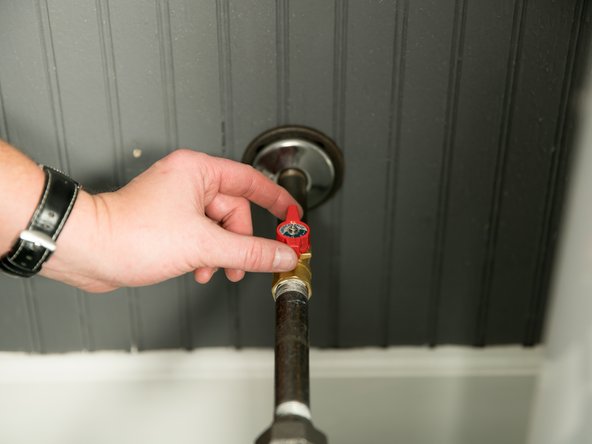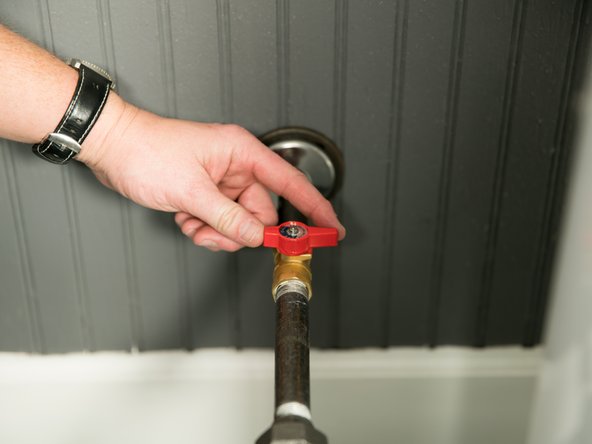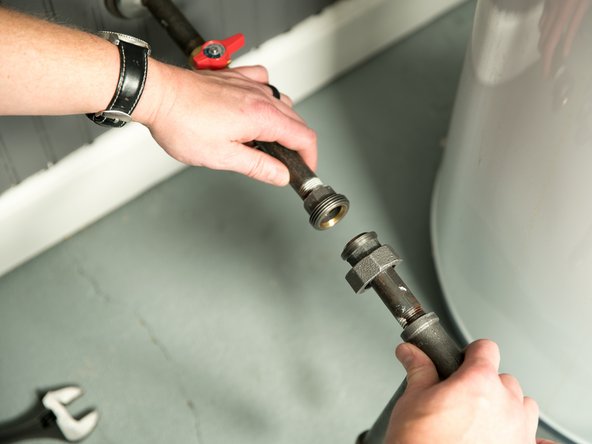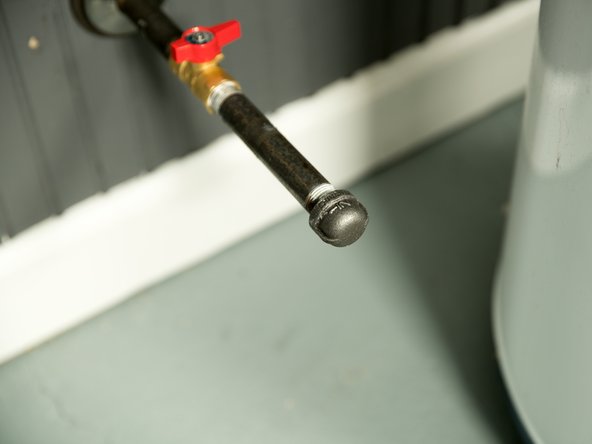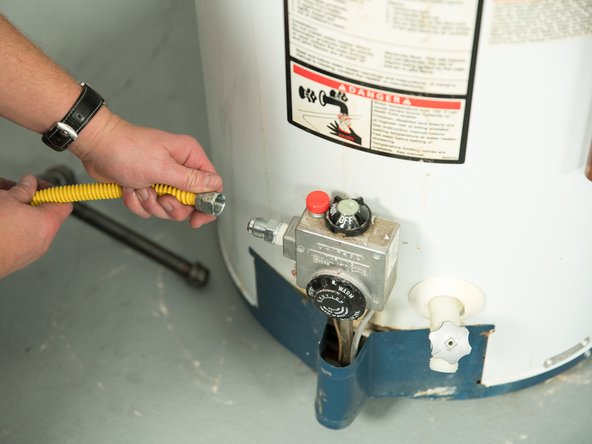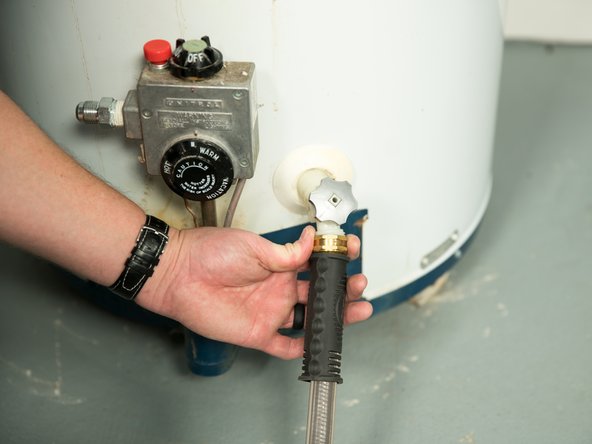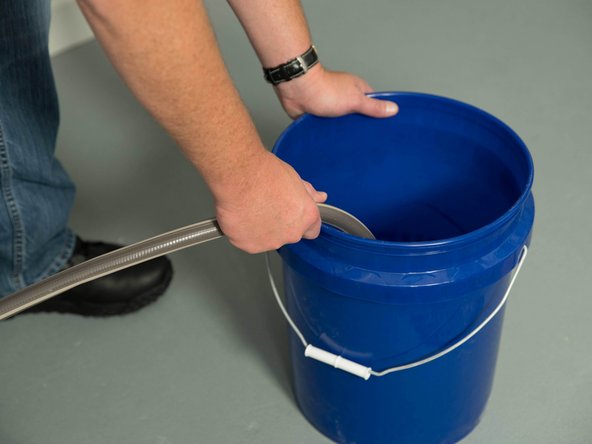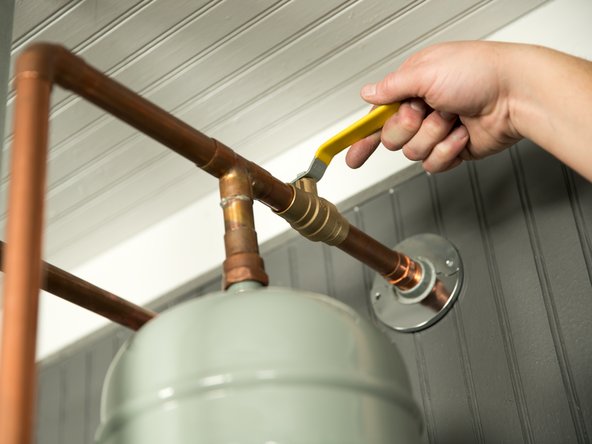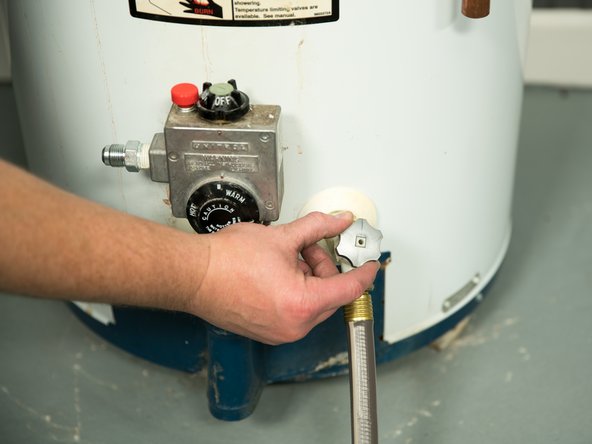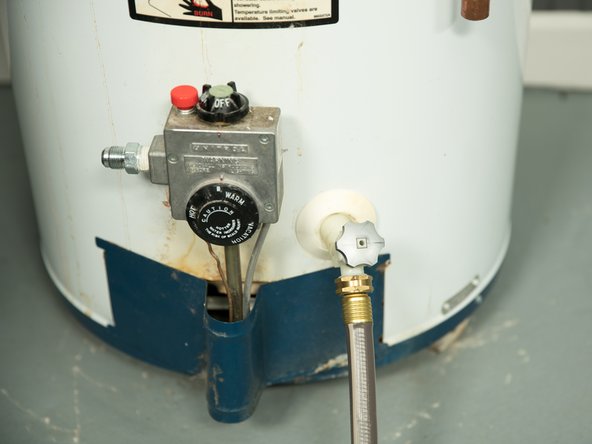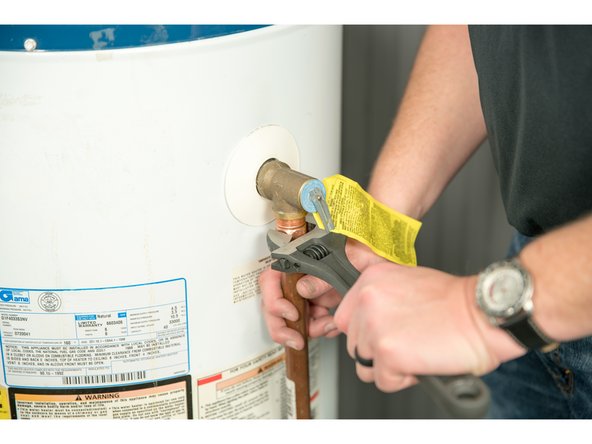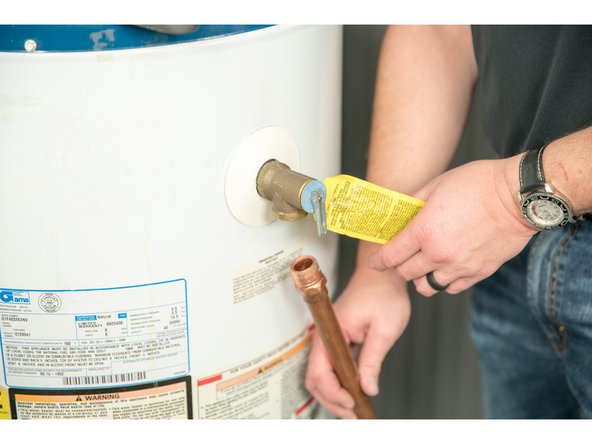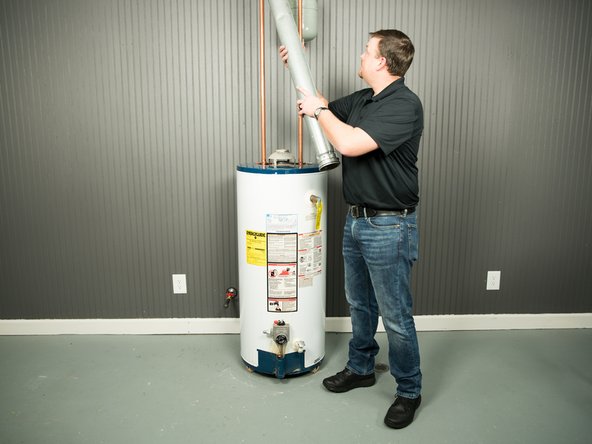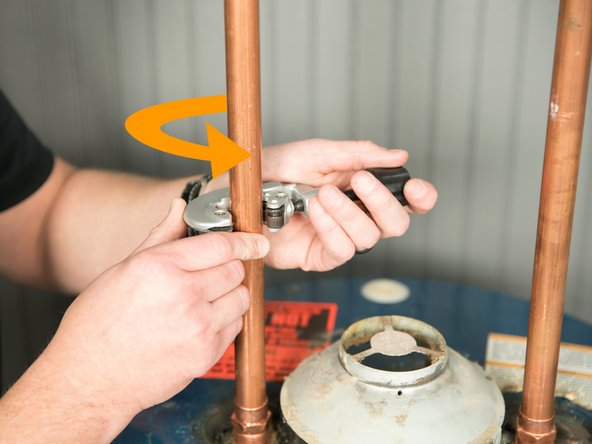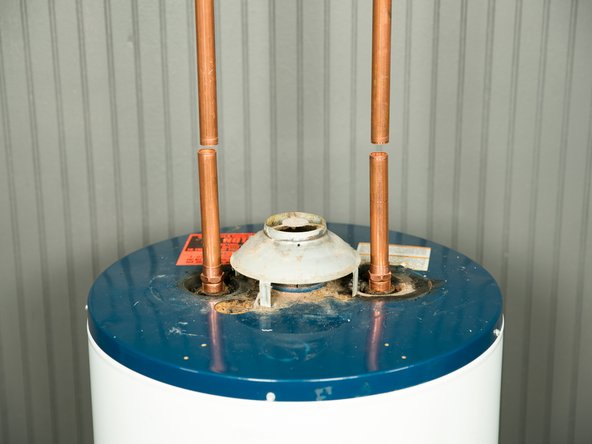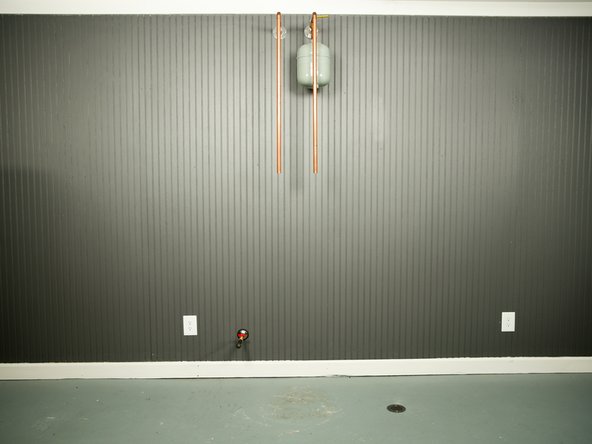Introduction
The information on this web site is supplemental to the printed instructions that came with your water heater. To reduce the risk of property damage, serious injury or death, read and follow all labels on the water heater and the safety instructions in the printed owner's manual.
Tools
Parts
No parts specified.
-
-
Garden hose
-
Hand truck or appliance dolly
-
Pipe cutter
-
Screwdriver
-
Wrenches
-
Bucket (optional)
-
-
-
On the old water heater, turn the knob on the gas control valve to the OFF position.
-
-
-
Turn the main gas supply valve OFF.
-
-
-
Break the gas line at the union (two wrenches are needed).
-
Cap the gas pipe.
-
-
-
Disconnect the gas pipe from the old water heater's control valve.
-
-
-
Open a hot water faucet and let the hot water run until it is cool (this may take 10 minutes or longer).
-
WARNING! Be sure the water runs cool before draining the old water heater to reduce the risk of scalding.
-
-
-
Connect a garden hose to the water heater's drain valve and place the other end of the hose in a drain, outside, or in a bucket.
-
-
-
Turn the cold water supply OFF.
-
-
-
Open the drain valve on the old water heater.
-
Opening a hot water faucet will help the water heater drain faster.
-
Some drain valves may be opened with a handle but others require a flat blade screwdriver.
-
Let the water heater drain completely.
-
Remove garden hose.
-
Sediment in the bottom of the tank may clog the drain valve and prevent it from draining properly. If you can't get the tank to drain, contact a qualified technician for assistance.
-
-
-
When the tank is empty, disconnect the Temperature & Pressure (T&P) Relief Valve discharge pipe.
-
You may be able to reuse the discharge pipe, but DO NOT REUSE THE OLD T&P RELIEF VALVE. Use the new T&P relief valve supplied with your new water heater.
-
-
-
Allow the vent pipe to cool. Once cooled, disconnect the vent pipe from the draft hood.
-
You may need to support the vent pipe until the new water heater is in place.
-
-
-
Before disconnecting the water pipes, decide how you are going to connect the new water heater. If you are using compression fittings, cut the water pipes close to the water heater, leaving the pipes as long as possible. You can cut them to length later.
-
Disconnect the cold and hot water pipes attached to the old water heater. Many are connected with a threaded union that can be disconnected with wrenches.
-
-
-
Remove the old water heater. Use a hand truck or appliance dolly to move the water heater.
-
CAUTION: Water heaters are heavy. Use two or more people to remove or install a water heater if you don't have an appliance dolly. Failure to do so can result in back or other injury.
-
One Comment
Step 1
Pic 1 control knob on old mechanical style gas valve being turned to OFF position
Pic 2 main gas control valve being turned OFF
Pic 3 hot water faucet with hot water running full
Step 2
Pic 1 connecting garden hose to old style drain valve
Pic 2 cold water supply being turned OFF
Pic 3 Opening drain valve w/ screwdriver
Step 3
Pic 1 removing T&P discharge pipe (near T&P)
Pic 2 removing vent pipe from draft hood
Pic 3 cutting water pipe close to water heater
Sep 4
Pic 1 breaking gas like at union
Pic 2 capping gas line
Pic 3 picking up old water heater on two wheeler
Henry James - Resolved on Release Reply








